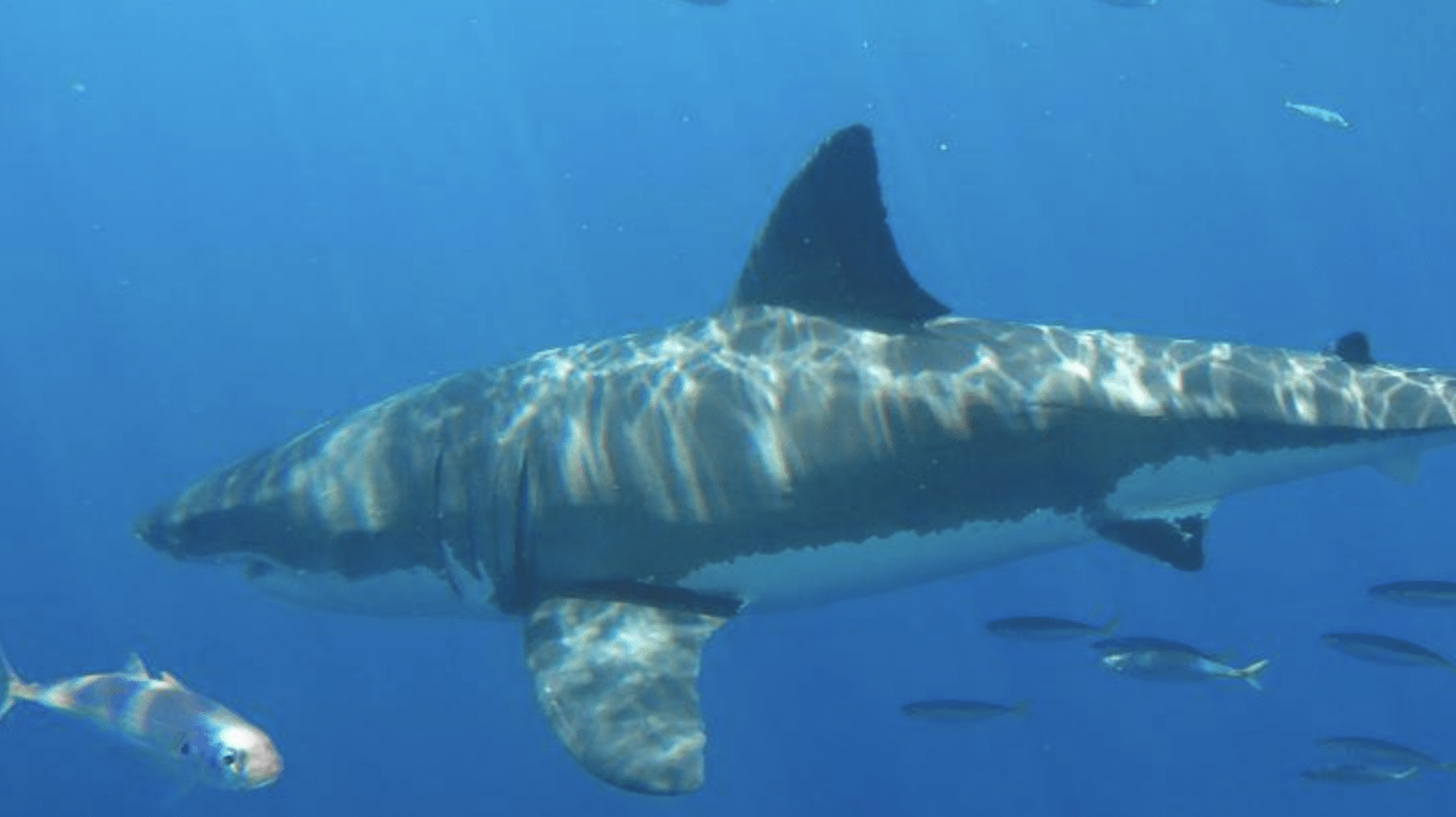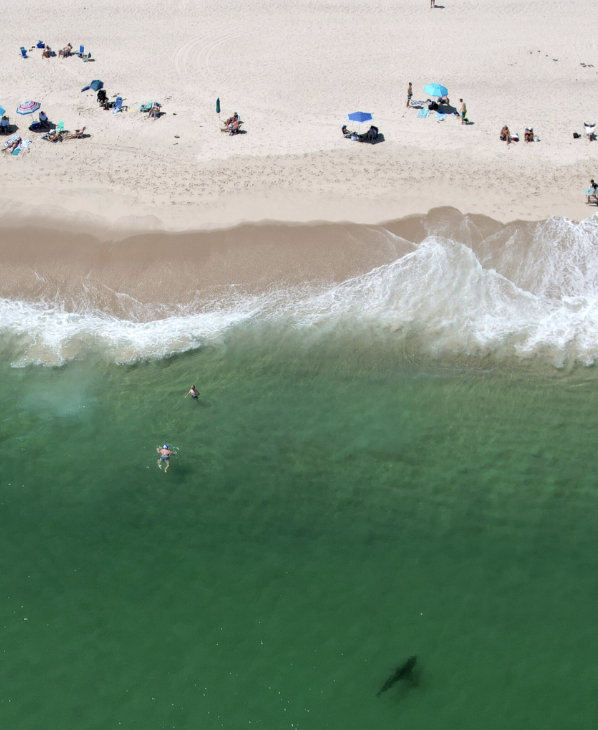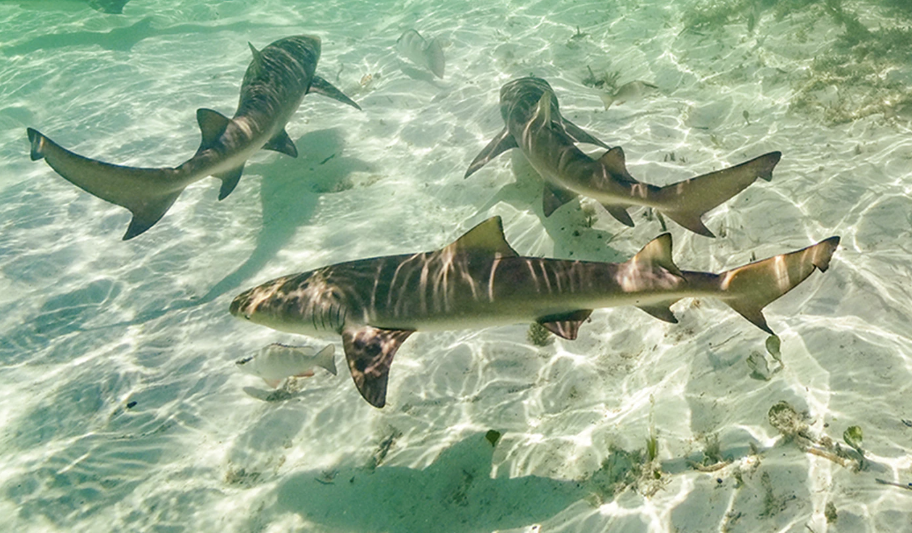Great White Sharks Go South To Eat Other Sharks

It’s that time of year again: White sharks, just like snowbirds, have started heading south for the weather. They’re turning toward Florida’s waters after spending the summer off Cape Cod and Nova Scotia, hunting seals and tuna.
Several sharks have begun pinging off South Florida, as part of a tagging study by nonprofit marine research foundation Ocearch. The tags, which last for up to five years, ping when the shark surfaces, sending location data to researchers.
Freya, a female who was 11 feet 8 inch long and 883 pounds when she was tagged off the Carolinas in March 2021, pinged a few miles off Hobe Sound last week.
Where she’ll go next is anyone’s guess, but research, and her previous behavior, indicate that she could be around for a few months.

Ocearch first captured and tagged Freya off Wilmington, N.C., in March 2021. Last year, she spent the summer hovering around Cape Cod and Nantucket, where white sharks are known to kill and eat gray seals, then moved up to the Gulf of Maine for late summer, and spent the fall of 2021 migrating south, eventually reaching Florida.
Last year at this time she was a few miles off Miami, then headed down to the Keys, where she lurked in the Gulf Stream. By February, she was back up in the Carolinas, where she spent the spring close to shore off Pamlico Sound, a lagoon in the Outer Banks.
Like many of the other larger sharks Ocerach has tracked, she then spent summer 2022 farther north, pinging all the way up into the Strait of Cabot, between Nova Scotia and Newfoundland.

All told, Ocearch’s tags indicate she’s traveled 7,568 miles in the nearly two years they’ve been studying her.
Though not all white sharks follow the same path, Florida seems to be popular.
Some white sharks round the peninsula and head into the Gulf of Mexico.
Edithe, an 11-foot, 8-inch female tagged off Nova Scotia in October 2020, skirted around the Keys and traced Florida’s west coast, traveling all the way to the De Soto Valley, a deep underwater cut in the Continental Shelf just east of the Mississippi Delta.
From there she headed back to an area north of the Dry Tortugas. Her last ping surfaced on April 2021, after covering some 4,295 miles over 471 days.
Migration motivation

“They migrate south because the water gets too cold for them,” said Neil Hammerschlag, shark research & conservation program director at the Rosenstiel School of Marine & Atmospheric Science, University of Miami. “They act like a snowbird and migrate south for the winter.”
As for summering in Canada and Cape Cod, “we don’t fully know all the answers,” Hammerschlag said. “With the waters off of Nova Scotia, it’s likely due to prey availability. It’s very productive waters—lots of large tunas, lots of seals.”
According to the National Oceanic and Atmospheric Administration, New England, too, has some nice offerings on the menu. Gray seals, eliminated in the 1970s, have made a pronounced comeback, attracting white sharks to the beaches of Cape Cod.
In September, Ocearch published a study of migration patterns of 48 white sharks they tagged along the east coast.
The study indicates that these sharks are habitual, using the same sites each year.

Each site performs a function: Long Island seems to be a summer nursery area for yearlings. The Carolinas are a winter nursery. Florida and the Gulf are wintering areas, New England and Canada are for summer foraging. There are still questions, though, as to where the sharks mate - possibly off the Carolinas, but more research is needed.
Unlike most sharks, white sharks are able to elevate their body temperatures above the surrounding water temperatures.
Despite this warm-blooded ability, Hammerschlag said that water temperatures initiate these migrations, and the sharks adapt their diet accordingly as they travel.
What are they killing in Florida waters? Monk seals, once widespread on the Florida coast, are now extinct, so the sharks have refocused on fish. In addition to pelagic fish and squid, Hammerschlag, said that “what they’re eating in the Keys or the Gulf is probably mostly other sharks.”